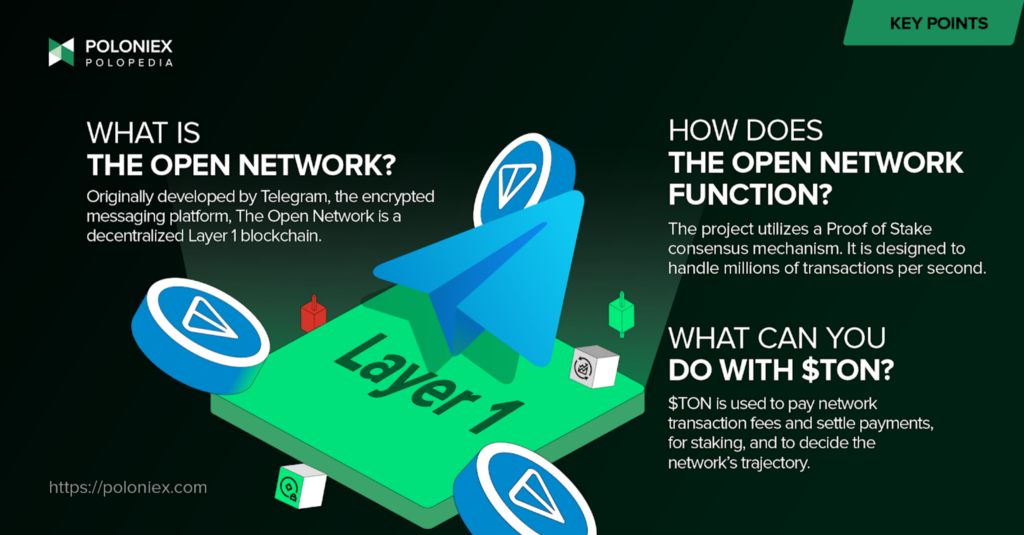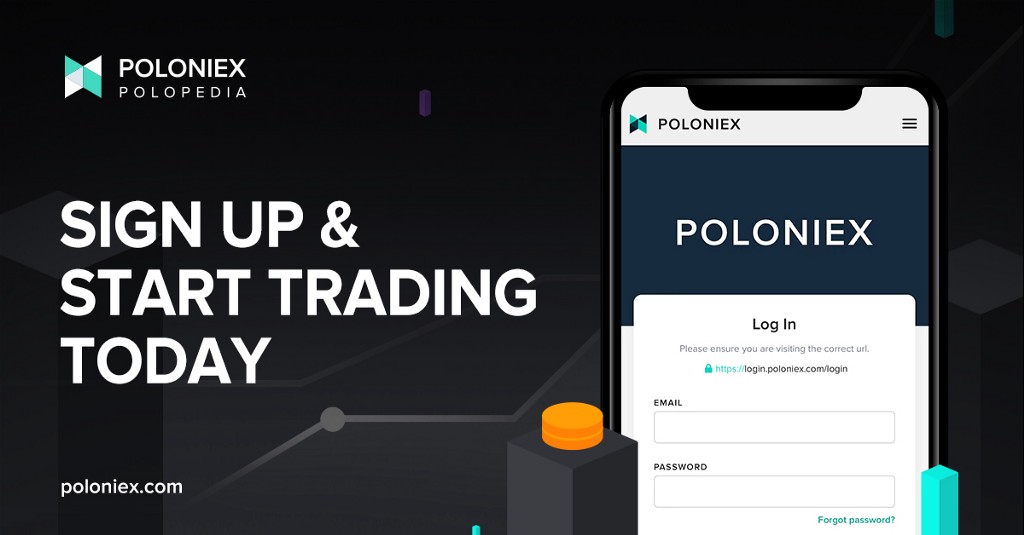
What is The Open Network (TON)?
The Open Network, started in 2018 by Telegram is a Layer 1 blockchain that functions off of a proof of stake consensus mechanism, and touts a throughput of 1million tps.
The project is made up of a multi-blockchain platform with a high throughput and supporting smart contract development and deployment.
Some of TON’s Components:
The TON P2P (peer-to-peer) Network which is for accessing the TON Blockchain, sending transactions candidates, and giving blockchain updates to a client
Distributed storage, or TON Storage, which archives copies of blocks and snapshots.
TON Proxy, which users can anonymously access and use the network through.
A distributed hash table.
A platform for services that feature UI that is browser/app-like for easy use through a smartphone.
TON DNS, which, like DNS for the Internet, assigns human-readable names
to smart contracts, accounts, services, network nodes, and smart contracts.
A platform for micropayments called TON Payments
The aim of all of these parts of the TON network is- as one might guess considering the project was originally conceived by a user-first messaging app- to offer an easy-to-use, smooth experience for everyday users.
How does TON work?
So about that “1million tps”. That sounds crazy, right? Well, this is made possible due to TON’s unique architecture. The TON blockchain is made up of a “collection of two blockchains”. That is, a master blockchain (or masterchain) and several working blockchains (or workchains). The master blockchains are responsible for being a repository of the protocol’s general information, information about validators, workchains and their shards, and the hashes of the work- and sharchains’ most recent blocks. The workchains, on the other hand, contain information on events like smart contract transactions and value-transfer. In terms of consensus, the blockchain uses a proof of stake mechanism.
What is interesting about the workchains is that they themselves can be split up into shard blockchains (or shardchains). Each shardchain is tasked with handling transactions for a subset of accounts. This in turn helps the network lower its possibility of congestion significantly. Sharding refers to the splitting of a database horizontally. In the case of blockchains, it helps reduce network load.
Let’s look a bit at the numbers at play when it comes to TON’s architecture:
The network has an impressive block time of 5 seconds, and can split workchains into 260 shards, allowing for much less network stress and congestion. For a comparison, Ethereum plans to implement shard chains, and will be capable of splitting chains into 26 shards. Time to finality sits at under 6 seconds, which means the network is very fast when it comes to transaction
What can you do with $TON?
$TON can be used for various things on the TON network. Like other networks, $TON is used for transaction processing fees as well as cross-chain transaction fees. dApps that build on TON can also receive the token in exchange for services their app provides.
$TON is also the governance token of the network, and is used to vote for decisions that affect the future of the network. As it is a proof of stake blockchain, validators also stake the token to secure it.
There are yet more things the TON token can do, and as the project progresses there will be more functionality added, such as the use of the token as payment for decentralized data storage and TON Proxy.
How to acquire $TON
$TON is available on multiple exchanges like Poloniex! You can acquire $TON through trading a USDT or USDD trading pair: TON/USDT | https://poloniex.com/spot/TON_USDD/

Feeling ready to get started? Sign-up is easy! Just hop on over to https://poloniex.com/signup/ to start your crypto journey🚀
was originally published in The Poloniex blog on Medium, where people are continuing the conversation by highlighting and responding to this story.

